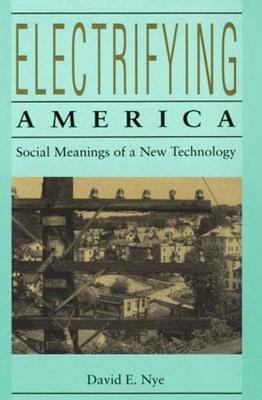Emphasizing the experiences of ordinary men and women rather than the lives of inventors and entrepreneurs, Nye treats electrification as a set of technical possibilities that were selectively adopted to create the streetcar suburb, the amusement park, the "Great White Way," the assembly line, the electrified home, and the industrialized farm. He shows how electricity touched every part of American life, how it became an extension of political ideologies, how it virtually created the image of the modern city, and how it even pervaded colloquial speech, confirming the values of high energy and speed that have become hallmarks of the twentieth century. He also pursues the social meaning of electrification as expressed in utopian ideas and exhibits at world's fairs, and explores the evocation of electrical landscapes in painting, literature, and photography. Electrifying America combines chronology and topicality to examine the major forms of light and power as they came into general use. It shows that in the city electrification promoted a more varied landscape and made possible new art forms and new consumption environments. In the factory, electricity permitted a complete redesign of the size and scale of operations, shifting power away from the shop floor to managers. Electrical appliances redefined domestic work and transformed the landscape of the home, while on the farm electricity laid the foundation for today's agribusiness.

Electrifying America: Social Meanings of a New Technology, 1880-1940
Emphasizing the experiences of ordinary men and women rather than the lives of inventors and entrepreneurs, Nye treats electrification as a set of technical possibilities that were selectively adopted to create the streetcar suburb, the amusement park, the "Great White Way," the assembly line, the electrified home, and the industrialized farm. He shows how electricity touched every part of American life, how it became an extension of political ideologies, how it virtually created the image of the modern city, and how it even pervaded colloquial speech, confirming the values of high energy and speed that have become hallmarks of the twentieth century. He also pursues the social meaning of electrification as expressed in utopian ideas and exhibits at world's fairs, and explores the evocation of electrical landscapes in painting, literature, and photography. Electrifying America combines chronology and topicality to examine the major forms of light and power as they came into general use. It shows that in the city electrification promoted a more varied landscape and made possible new art forms and new consumption environments. In the factory, electricity permitted a complete redesign of the size and scale of operations, shifting power away from the shop floor to managers. Electrical appliances redefined domestic work and transformed the landscape of the home, while on the farm electricity laid the foundation for today's agribusiness.